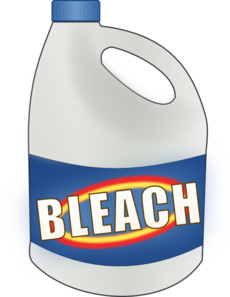Question: Should I Shock My Well with Chlorine or Not?
Should I shock my well with chlorine bleach. Shocking a well is an often old wives tale for solving issues with well water. We hear customers who want to try this all the time as if it were a “fix all” for well water problems. “Shocking” a well is the process of adding multiple gallons of bleach into a well casing with the hopes of eliminating iron, sulfur, manganese and bacteria. This is a “band aid approach” used a long time ago by well drillers.
The well drillers used to recommend this as a fix for smell in water or bacteria such as coliform. In very rare cases, shocking a well can be one step in the process to clean water, but usually only in new well or a well that has tested positive for e-coli or coliform. Unless you have e-coli or coliform you should normally NOT shock that well if it is high in iron or manganese.
Don’t shock most wells more than once
Household bleach is often used to shock a private well. Normally you do not want to shock wells with high iron or manganese.
Additionally a new well that isn’t capped or covered. Can contain impurities that lead to various forms of coliform. This includes fecal coliform. And it also includes other contaminants such as e-coli that appear in the water. Testing is done after the well is completed normally. And this is to ensure potability of the water. And also to identify any contaminants. If the testing returns a positive reading for coliform. The standard response is to shock the well one time. Once the well is shocked. If the e-coli or coliform returns. Then you must chlorinate “OUTSIDE” the well after that. Because you must assume it will return again. Especially if the well contains measurable amounts of iron or manganese. DO NOT repeatedly shock a well with iron, manganese or anything else that can oxidize and turn into a sediment that can build up in the well.
How do I shock my well?
Read more about that here:
How do I shock my private well?
To learn how to properly shock your well, or to find out if shocking is even necessary, you may call our techs at 1-800-684-0979. Shocking a well is not a good idea to repeat over and over because it could cause more issues in the long run. We don’t charge for this advice and may be able to point you in a better direction. To learn exactly how to treat your water problem we always suggest you start with our free water test. And the best way to approach any residential well with an issue. Is to read the instructions under items 7, 16 and 17 on this page:
QUESTIONS?
CALL TOLL FREE: 800-684-0979E-mail: support@waterfiltersofamerica.com

Leave a Reply